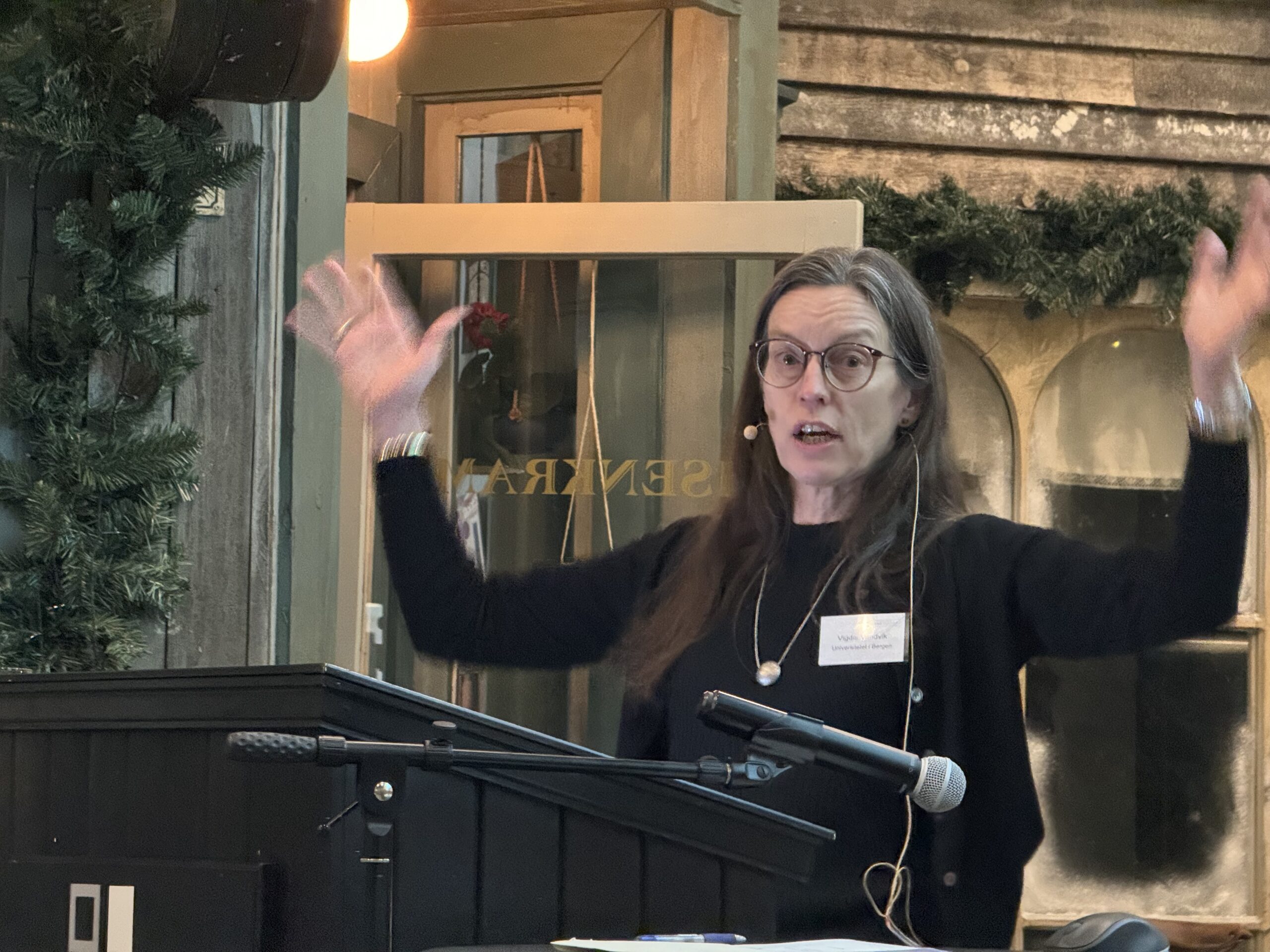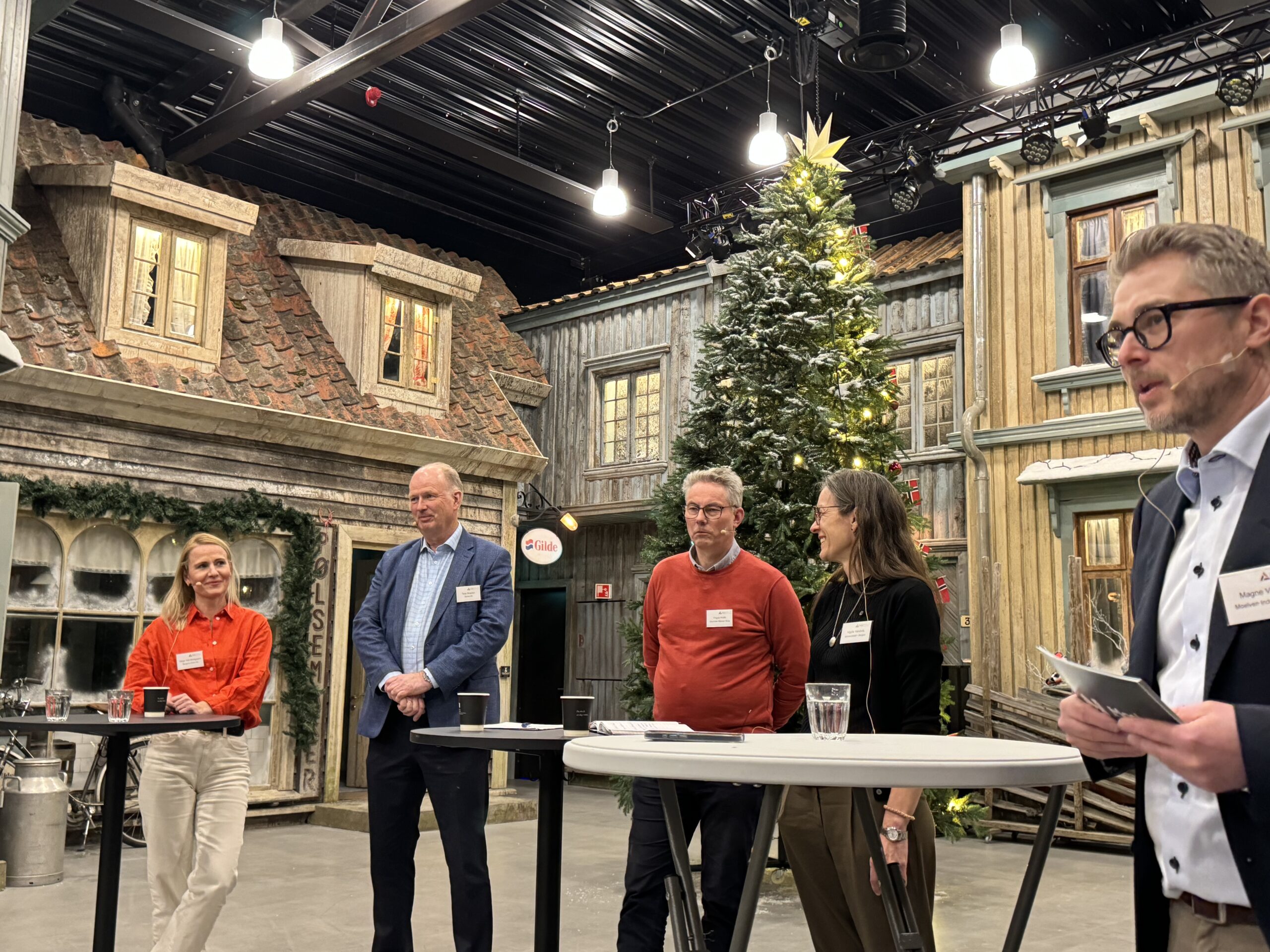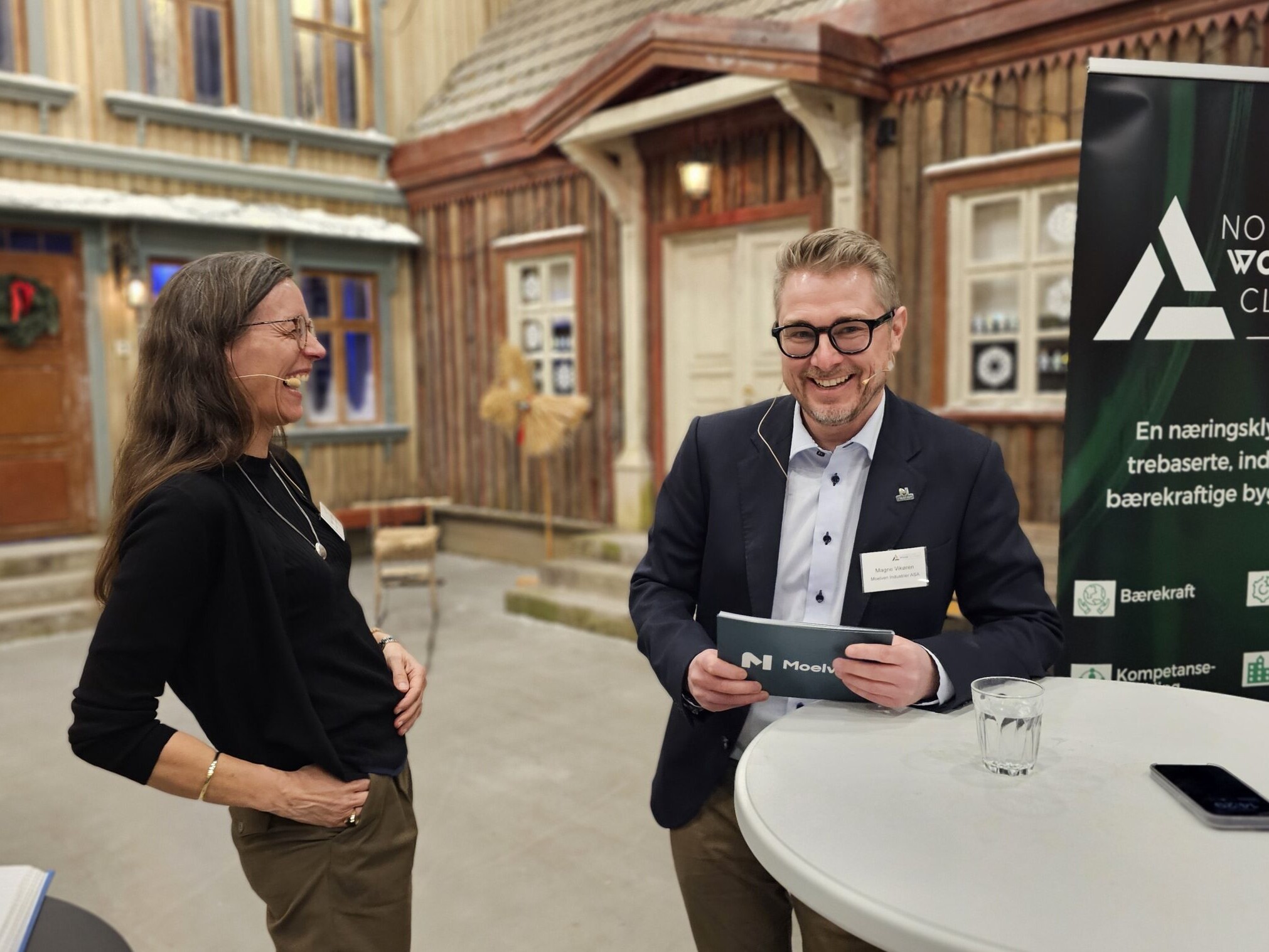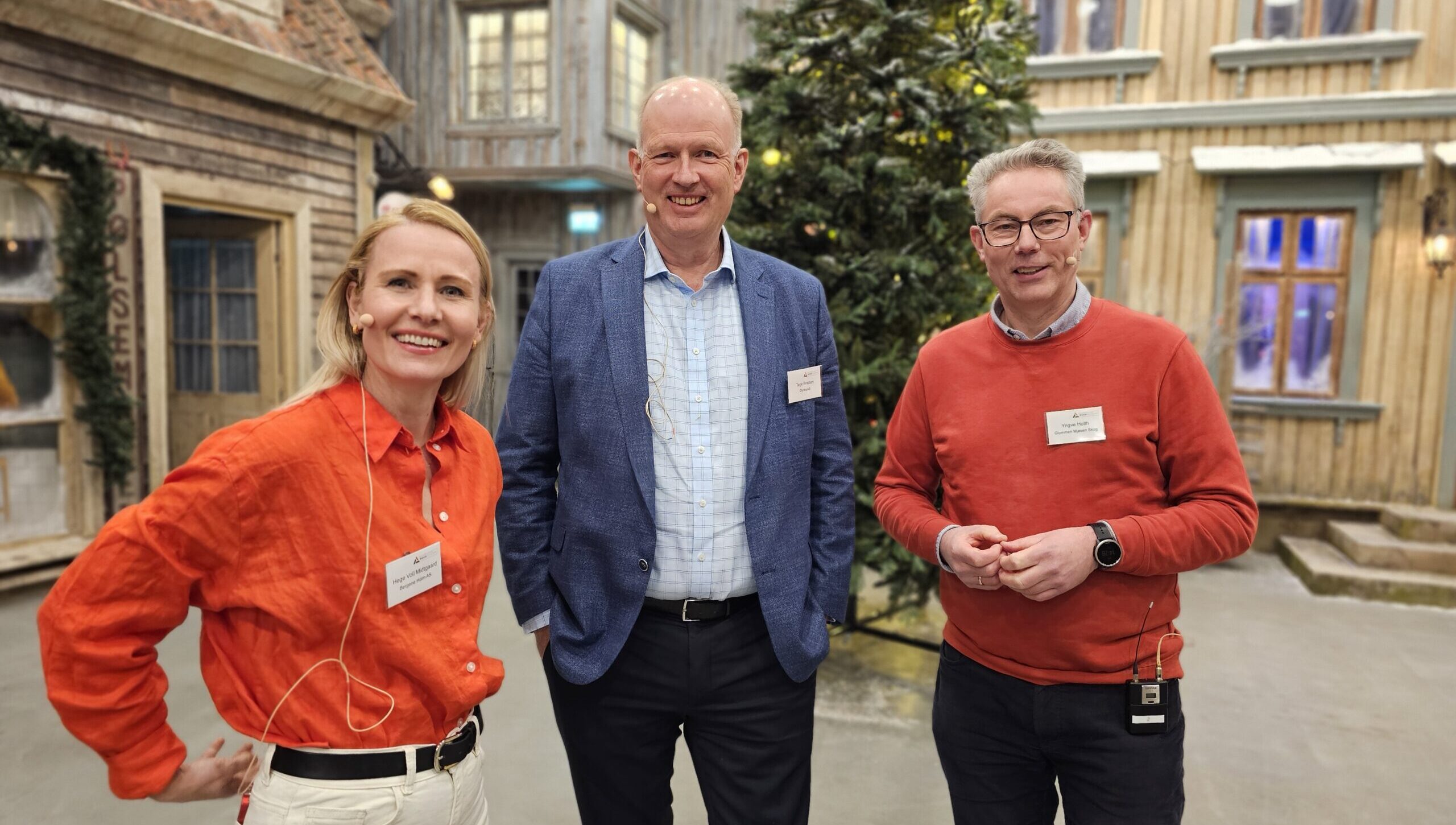Professor Vigdis Vandvik, University of Bergen, is a member of the UN’s Panel on Nature and was a member of the Natural Hazards Committee that recently submitted its recommendations. She was invited to the owners’ meeting in NWC on April 17 to give the participants better insight into the nature agreement and the consequences for the forest and wood industry.
We won’t stop doing forestry
Vigdis Vanvik advised the industry to be a little ahead of the game and reduce the level of conflict. She had the following message about sustainable forestry:
– “We need to have an eternal perspective and not consume the foundation. We’re not going to stop forestry, but we need to look at the entire food chain, reduce waste and make products that last longer. The footprint of the forest must be reduced, and resources must be extracted in a way that causes less damage to the ecosystem. Not everything can be solved through protection,” said a committed Professor Vigdis Vandvik to an attentive audience.
Solar energy and nature
– We have a global climate crisis, but it could also be much worse, and we have more room for maneuver than we are exploiting. The biggest impact will come from using more solar energy. The second most important thing we can do for the climate is to take care of more of the nature we have. The climate crisis exacerbates the nature crisis,” said Vandvik.
Nature agreements
The UN Nature Panel has laid much of the foundation for the global nature agreement that was adopted in Montreal in 2022. The nature agreement aims to stop and reverse the loss of nature and ecosystems.
– The Nature Panel compiles knowledge. It is an important arena for showing what we agree on. A total of 24 members of the Nature Panel were present in Montreal during the negotiations. “There were 10,000 participants from the business community,” said Vandvik. She believes that nature is Norway’s environmental policy Achilles heel.
– “Land use change is the biggest threat to Norwegian species and Norwegian nature,” said Vandvik.
Large carbon storage
Norwegian nature stores almost three times as much carbon as the world average due to very large underground storage.
– CO2 molecule that is sequestered in a tropical forest lasts about 14 years. With us, we are at 60. This means that our carbon is retained much longer in the ecosystems,” said Vandvik.
– “For Norway, the nature agreement means that we must economize more with nature and prioritize needs, we must move from a linear to a circular view of resources, and we must think a little less economic gain here and now. We need to take a more long-term view in order to contribute to a system that will work into the future,” said Vandvik.


dialog
Magne Vikøren, Communications Director at Moelven Industrier, led the subsequent dialog between Professor Vigdis Vandvik and representatives of the forest and wood industry in an excellent manner.
– In recent years, there has been a lot more focus on our value chain; surface harvesting, lifespan, documentation, climate declarations, transport emissions. Because we make our living from a natural product, the focus will be on us going forward. Forestry must be sustainable. What does that mean for us?” asked Vikøren.
– “There are significant changes in the forestry we’re doing now compared to 30 years ago, so I’d say we’re showing a great willingness to change in forestry. The challenge for the social debate we have today is that people are bringing up something that happened in the 1960s. The problem for our industry is that it takes 30 years before you see the results of implemented changes. The time perspective is also a problem with regard to carbon accounting systems,” said Yngve Holth, Business Policy Manager at Glommen Mjøsen Skog.
– “I think there’s a lot of good stuff going on and that we have the momentum to make the innovation race happen. I see the NWC as a great way to join forces, so I’m optimistic about the future. We need to work more together, get more involved in standardization, make it easier to use wood, reduce waste throughout the value chain and increase the proportion of long-life products,” said CEO Tarje Braaten, Dynea. Tarje Braaten, Dynea.
– There are a lot of opportunities and challenges, but we need to move forward on documentation. We need to take on board the nature part. For example, how to reuse the materials. If we’re to achieve this, we need to plan correctly from the start. And then there’s the question of who picks up the bill for more circularity. By the way, solid wood doesn’t solve everything; we need to use the right structures in the right place. Then we know that the building can last much longer than 80-90 years,” said Sustainability Manager Hege Voll Midtgaard, Bergene Holm.
– So what should this value chain do more of, and what should we do less of in the future,” said Magne Vikøren and received a brief summary from Vigdis Vandvik.
– “If you can manage to be a little ahead of the curve, collaborate more and give a little to the nature side in the public debate, I think there’s a lot to be gained from that. If you reduce the level of conflict, both the industry and nature will have a lot to gain,” Vandvik concluded.


